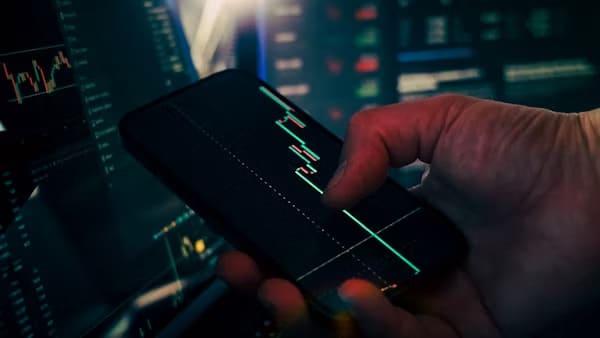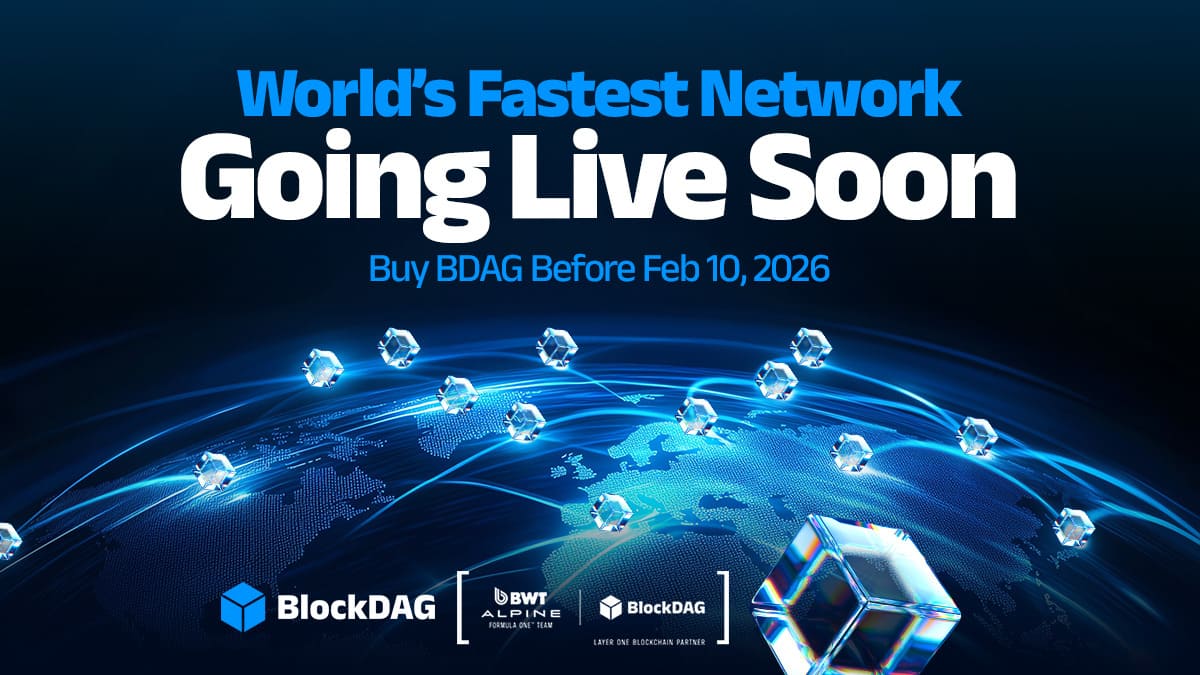Recent market sentiment has been shaped by two distinct narratives: Ethereum (ETH) price recovery, gaining traction after weeks of consolidation, and Uniswap (UNI) market trend showing renewed participation following liquidity surges and governance debates.
Buyers are beginning to ask whether consistency, not hype, is becoming the true commodity in crypto. If trust is the new premium, where do they place their bets next? And which network, beyond daily volatility, signals structural maturity rather than speculative momentum?
This is where BlockDAG (BDAG) enters the conversation, not for being the best performing crypto today, but for redefining how leadership credibility affects capital flow. Unlike faceless presale projects, BlockDAG is led by Antony Turner, whose decision to confront scrutiny rather than avoid it has become a calculated advantage. His transparency has shaped BlockDAG’s reputation as the “Face of Accountability,” anchoring over $435 million in community funding under public, verifiable leadership.
BlockDAG: Transparency as a Strategy
What sets BlockDAG apart isn’t just its technology but the way it chooses to be seen. CEO Antony Turner has taken full ownership of the project’s identity, hosting livestreams, answering difficult questions during AMAs, and placing his reputation on the line. In a market where many claim to be the best performing crypto today without ever showing their faces, this visible leadership has become BlockDAG’s strongest marketing tool and its biggest trust signal.
That approach has translated into numbers. The presale has raised over $435 million from more than 312,000 holders. The final phase is now defined by a clear structure: the presale will end permanently on February 10, 2026, or when allocation runs out. The remaining 2 billion coins are being sold across the last 10 stages, starting at $0.005 and rising to $0.03. All promotional bonuses are closed, replaced with a simple vesting schedule, 40% of coins released at launch, followed by 20% each month for three months.
This is not the loudest or best-performing crypto today, but it is one of the few treating investor confidence as seriously as code development. Turner’s decision to run the project in full view of the public has turned transparency into a growth engine, proving that accountability can move markets just as effectively as hype.
Ethereum (ETH) Price Recovery: Holding the Line
The Ethereum (ETH) price recovery has become one of the most-watched developments over the past few days. ETH is currently trading around $3,860 after a brief pullback to the $3,700 range. The market is testing key resistance near $4,000, while support between $3,600 and $3,800 continues to hold.
Analysts note that this rebound is supported by softer monetary policy, steady staking participation, and optimism around potential ETF inflows. Still, on-chain activity has slowed, and futures premiums remain muted, suggesting that enthusiasm is cautious rather than euphoric.

However, the story of the Ethereum (ETH) price recovery isn’t just about charts. It reflects whether the network can maintain investor confidence despite falling gas fees and lower activity on DeFi platforms. If ETH manages to close convincingly above $4,000, targets between $4,200 and $4,600 could reopen.
Fail to hold current support, and a retest of $3,500 remains possible. For now, Ethereum is not leading as the best-performing asset, but it is quietly proving resilience, offering a steady narrative in a market often driven by hype rather than data.
Uniswap Market Trend Shows Hesitation Near $6 Resistance
The Uniswap (UNI) market trend has been shaped by mixed signals in recent days. UNI is trading around $5.80, with resistance forming near the $6 mark and support holding in the lower $5 range. Trading volume has dipped, and analysts say buyers are hesitant to commit strongly until price action breaks out of this flat range.
Protocol developments continue, with Uniswap v4 upgrades and a $9 million gas rebate grant supporting developer activity. However, recent exploits connected to v4-compatible platforms, like the $8.4 million Bunni DEX incident, have prompted caution around DeFi-related tokens.
Still, the Uniswap (UNI) market trend isn’t without optimism. Some technical charts suggest a potential move toward $7–$8 if UNI manages to close above key resistance levels. DeFi liquidity and swap volumes remain steady, which supports long-term usage even if price momentum is slower to respond.
For now, UNI sits in a middle zone, neither strongly bullish nor decisively weak, waiting for a catalyst such as improved liquidity inflows, governance shifts, or a broader crypto rally. It’s not the fastest-moving asset today, but it’s still very much in the conversation.
Final Take
Ethereum and Uniswap are both showing signs of resilience, but neither is moving without resistance. The Ethereum (ETH) price recovery depends on whether it can firmly break past the $4,000 level, while maintaining support above $3,600. Meanwhile, the Uniswap (UNI) market trend remains caught between steady protocol progress and cautious trading sentiment. Both assets are holding attention, but neither is the best-performing crypto today, at least not yet.
That spotlight currently leans toward BlockDAG, not because it tops charts, but because of the trust it has built. While traders debate the next breakout, BlockDAG continues to raise funds under a visible leadership model. In a market where credibility is now as valuable as innovation, this approach is proving just as powerful as being the best performing crypto today.
Presale: https://purchase.blockdag.network
Website: https://blockdag.network
Telegram: https://t.me/blockDAGnetworkOfficial
Discord: https://discord.gg/Q7BxghMVyu
This article contains information about a cryptocurrency presale. Crypto Economy is not associated with the project. As with any initiative within the crypto ecosystem, we encourage users to do their own research before participating, carefully considering both the potential and the risks involved. This content is for informational purposes only and does not constitute investment advice.







